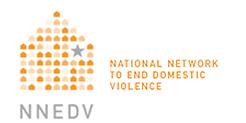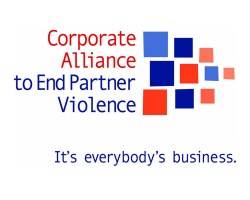Emotional abuse is just as bad as physical abuse. Worse! You can heal broken bones; you can’t heal a broken mind — Dia Reeves
Since I am so ashamed of and embarrassed by my choice (and remember that it is always your choice) to puss out and continue my abusive relationship for all these years, this blog is my attempt at self-redemption. I have only within the last two years realized that I really, truly made a very poor choice in judgment. In my attempt to educate others in hopes they don’t make the same mistake I did, I give more resources and statistics on domestic violence than one person will ever need, as well as information
specifically on emotional and verbal abuse, along with other forms of abuse.
 The National Domestic Violence Hotline is probably one of the best resources you’ll find which addresses every possible topic related to domestic violence you can think of. There’s help in identifying abuse, articles and a blog addressing a variety of topics, including “Is Change Possible in an Abuser?” and “Can I Save Them?”, an article focused on those thinking they can save their abuser. There’s a link to philanthropist Lundy Bancroft’s books on domestic violence. Reading books is a wonderful coping skill for anyone dealing with an abusive relationship. Knowledge is power, and power gives you the strength to GTFO! According to the NDVH website,
The National Domestic Violence Hotline is probably one of the best resources you’ll find which addresses every possible topic related to domestic violence you can think of. There’s help in identifying abuse, articles and a blog addressing a variety of topics, including “Is Change Possible in an Abuser?” and “Can I Save Them?”, an article focused on those thinking they can save their abuser. There’s a link to philanthropist Lundy Bancroft’s books on domestic violence. Reading books is a wonderful coping skill for anyone dealing with an abusive relationship. Knowledge is power, and power gives you the strength to GTFO! According to the NDVH website,
On average, 24 people per minute are victims of rape, physical violence or stalking by an intimate partner in the United States — more than 12 million women and men over the course of a year
These statistics, provided by The National Domestic Violence Hotline, are astounding. Unfortunately there’s a lot more statistics:
| Nearly 3 in 10 women (29%) and 1 in 10 men (10%) in the US have experienced rape, physical violence and/or stalking by a partner and report a related impact on their functioning. |
| Nearly, 15% of women (14.8%) and 4% of men have been injured as a result of IPV that included rape, physical violence and/or stalking by an intimate partner in their lifetime. |
| 1 in 4 women (24.3%) and 1 in 7 men (13.8%) aged 18 and older in the United States have been the victim of severe physical violence by an intimate partner in their lifetime. |
| IPV alone affects more than 12 million people each year. |
| More than 1 in 3 women (35.6%) and more than 1 in 4 men (28.5%) in the United States have experienced rape, physical violence and/or stalking by an intimate partner in their lifetime. |
| Nearly half of all women and men in the United States have experienced psychological aggression by an intimate partner in their lifetime (48.4% and 48.8%, respectively) |
| Females ages 18 to 24 and 25 to 34 generally experienced the highest rates of intimate partner violence |
| From 1994 to 2010, about 4 in 5 victims of intimate partner violence were female |
| Most female victims of intimate partner violence were before victimized by the same offender, including 77% of females ages 18 to 24, 76% of females ages 25 to 34, and 81% of females ages 35 to 49 |
There are plenty of fantastic resources as well as thorough information for victims planning an escape, who are looking for shelter, as well as articles for those who have already escaped their abuser but need help in order to move on with their lives as a healthy, emotionally strong person. Visit their website and browse their many pages offering help in whatever capacity you need. If you need any help with finding what you need or actually making any necessary calls, I will help you no problem. Shoot me an email at little_lulu@artlover.com, give me your phone number, and I will call you immediately. 
Another great website offering help finding local shelters, you will love what’s available at domesticshelters.org. They have tons of articles, including “Danger Assessment Could Predict Whether an Abuser Will Kill” and “When No One Believes You“. There are also links to a few online forums for those wishing to escape their abuser, such as aftersilence.org and experienceproject.com. Another article I found very useful in helping those who aren’t sure if they are being abused, called “Abusive Red Flags Everyone Should Know“How to Recognize Emotional Abuse“. This site has more topics covered than any other site I have ever visited. One topic covered which I have often thought about with my situation but didn’t pursue it: crime victim compensation. According to domesticshelters.org:
State crime victim compensation programs intend to cover expenses that insurance or other public benefit programs won’t. Each state’s program varies slightly, so it’s important to refer to the program guidelines in the state where the crime occurred to decide what benefits are available and how exactly to apply for them
Crime victim compensation is available in varying amounts in all 50 states. It helps a victim recover money lost in medical and dental bills, lost wages, loss of child support payments, damage done to the victim’s home–in fact they even cover funeral costs in cases of homicide by one spouse on the other.

The National Association of Crime Victim Compensation Boards ( to find victim coverage in your state) helps victims of domestic violence by offering financial compensation to domestic violence victims when insurance or other such programs fail to cover the victim’s expenses. It was the first type of victim assistance program in the United States. I only learned of this program today as I prepared my research for this post. You can find more information on NACVCB here, where you will also find links to many more resources. 
The National Coalition Against Domestic Violence is another nationwide victim assistance organization which offers many resources to victims. The one thing this organization offers which I found very resourceful and up and coming, is the use of webinars. I haven’t yet seen this, and know from experience how beneficial it is to take part in a webinar as opposed to simply educating oneself by reading. It’s interactive and as mentioned in my last post, it is exactly what a victim of domestic violence needs to feel a strong connection to other people. Here is a printable pdf publication put out by NCADV “Facts About Domestic Violence and Psychological Abuse” which I thought would be useful for the people using my blog who are real victims of psychological, or emotional abuse. This organization has a great deal of educational tools which includes many publications for printing for another time. Definitely make use of this website as well.

The National Network to End Domestic Violence, according to their website,
a social change organization, is dedicated to creating a social, political and economic environment in which violence against women no longer exists.
They offer help and resources in seeking economic justice once victims have escaped their abuser, as well as information and links to resources and forms for transitional housing, in preparation for the victim of becoming a survivor. It appears to me that this organization really stresses finding financial independence from one’s abuser. They also give an enormous amount of information about legislation on domestic violence and how to get help in seeking justice. They also have a very informative take action page, encouraging visitors to the site to educate themselves on domestic violence legislation and to reach out to local, state, and federal government officials in trying to increase the number of and strength of the current legislation.
Another helpful and resourceful website I discovered was The National Center on Domestic Violence, Trauma & Mental Health, one of four national Special Issue Resource Centers funded by the U.S. Department of Health and Human Services. Their focus is the mental health aspect of all forms of domestic violence, but particularly the long-term effects most commonly associated with emotional or verbal abuse. There are a slew of serious long-term mental issues present in domestic violence victims, such as inability to trust, fear of abandonment, severe insecurity and inability to make decisions, among a host of others. According to their website, The National Center on Domestic Violence, Trauma & Mental Health
provides training, support, and consultation to advocates, mental health and substance abuse providers, legal professionals, and policymakers as they work to improve agency and systems-level responses to survivors and their children. Our work is survivor defined and rooted in principles of social justice.

There is one last national resource for domestic violence victims I would like to take a moment to discuss, and that is Corporate Alliance to End Partner Violence, a nonprofit organization affiliated with Verizon Wireless, seeks to discuss the issue of the higher costs and consequences to the workplace when an employee is a victim of domestic violence. Founded in 1995, it’s the only organization of its kind. Though the website clearly states that the ultimate goal is to increase corporate profits by reducing the costs associated with domestic violence on employees. The banner on the heading of their website states they are “dedicated to providing the community and our members unmatched resources about partner violence”. Here’s what they had to say about their purpose:
We envision enhanced corporate profitability through reduction of rising expenses related to partner violence, such as health care costs and expenses due to low productivity, high turnover, and absenteeism
I will admit they have a very detailed page listing the many events they put together for their members and the community, in order to raise awareness and end domestic violence. These events are not just hosted on a local level; they also offer national events. One enormous national event they organized which I have heard about for years is Domestic Violence Awareness Month. The most impressive quality this organization has to boast is affiliated with and sponsored by Verizon Wireless, having created a nonprofit division called Hopeline, which aims to prevent, educate and empower: prevent domestic violence, educate the community and empower domestic violence victims. One of the ways which they carry out through the donating of no longer used cell phones, which turns into valuable financial support for the initiatives they support.
The resources I have chronicled here are invaluable to victims and their loved ones. If I had spent a month on research I probably still could not have covered every major domestic violence organization out there, but I have listed the ones I felt were most deserving of the free marketing. In a future post I will be covering a different set of domestic violence resources, to establish the ease with which these resources are available to the public.
Although I have chosen to not use any of these resources other than research, that’s not to say I haven’t been deeply affected by my experiences. The most obvious effect I have had to deal with due to the emotional abuse and psychological mind games imposed on me for so many years, has been my general emotional well-being. I absolutely hate conflict, so emotional abuse continues to traumatize. I do at times experience pretty horrific and unbearable depression, and I suffer with debilitating anxiety, especially in social situations, and the past six or so years I have increasingly preferred being home, and sometimes, home all by myself. As I continue my quest for enlightenment, I am able to name some major mental issues I have which I know came from emotional abuse. Very recently a friend pointed out the defense mechanisms I show to cope with my abuse. You know what I am most looking forward to about being free from abuse?
I am looking so forward to being able to enjoy my late afternoon and evening without sitting there worrying about when my husband will be home or become a wreck once he does get home. I am looking forward to living without fear. What about you? What do you most look forward to when you ponder freedom from an abusive situation? I ask that you comment and share your thoughts with me and I will include them, anonymously without a doubt, on a post in the very near future.
Thank you for reading and I truly hope I was able to adequately give you necessary and essential resources so you or someone you love can free themselves from a violent and unhealthy environment, an environment reeking of domestic violence.
Please subscribe to my blog by clicking the subscribe button below.


I am interested in reading your blog post, but it’s hard to read the red text on your backbround!
LikeLike
Thanks for reminding me, it was 3am when I finished this and I saw the issue but said “eff it” and went to bed 😊 Fixing now
LikeLiked by 1 person
Thank you kind Sir, it’s now white — you have no idea how difficult that was — the editing background is also white..!
LikeLiked by 1 person
These are great! Thank you!
LikeLike